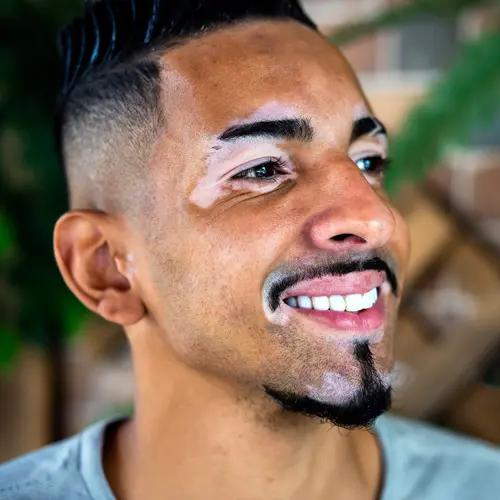What Is a Hickey?
A hickey, also known as a love bite, is a dark red or purple mark on your skin caused by intense suction. The neck is a common site for hickeys because of its easy access, but you can get them anywhere.
When your partner sucks on and bites your skin, the pressure breaks little blood vessels under the surface. Those broken vessels release tiny spots of blood called petechiae.
What does a hickey look like?
A collection of these blood spots forms a larger dark spot, which is basically a bruise. The bruise may change color over time from red or dark purple to yellow.
How to Get Rid of a Hickey?
If you notice swelling and inflammation, you can put an ice pack on the hickey for the first 1-2 days after the mark appears. Wrap the ice pack in a towel and hold it to your skin for about 15 minutes at a time, several times a day. Cold compresses usually work best on more severe bruising. After the second day, you can switch to a warm compress.
If your hickey isn't swollen or inflamed, you can treat it with a warm compress immediately and up to four times a day. This can increase blood flow to the area.
If the hickey hurts, take an over-the-counter pain reliever like acetaminophen.
You can also consider laser treatment for your hickey within the first 1-2 days after it appears. Talk to your doctor to see if this can be effective for you.
How to Hide a Hickey
When you have a hickey on your neck, people tend to know how it got there. If you're wondering how to cover up a hickey, some options include:
- Makeup. Choose your makeup tone based on the color of the hickey. A green tone will hide redness, while a yellow tone will conceal purple bruises. If you have darker skin, your hickey may be purple, dark brown, or black.
- Bandage. Choose one large enough to cover the hickey.
- Turtleneck. This works in cooler weather.
- Scarf. This may be the most versatile option.
- Collared shirt.
How Long Do Hickeys Last?
Like other bruises, hickeys can take anywhere from 3 days to 2 weeks to go away. Hickeys are superficial bruises, which means they are on the surface of your skin. These types of bruises usually don't take as long to heal as deeper bruises like black eyes. Although there is no quick fix for hickeys, there are ways to minimize the way they look while your skin recovers.
Typical bruise or hickey stages can vary according to the severity or your skin tone, but can include:
Day 1. Redness will appear because of the blood under the skin.
Days 1-2. The bruise becomes blueish purple or black as the hemoglobin changes (the iron-containing protein in the blood that carries oxygen).
Days 5-10. Shades of green or yellow.
Days 10-14. Yellowish brown or light brown and begins to fade.
How to Prevent a Hickey
Good communication may be the most effective way to prevent a hickey.
- If your partner spends too much time on one area, suggest another spot.
- Ask your partner to be more gentle.
Can Hickeys Be Dangerous?
A hickey shouldn't cause any real problems, but see a doctor if:
- The hickey doesn't go away after a couple of weeks.
- The bruise is very sore.
- You notice other bruises on your body, especially if you don’t know how you got them.
- There's a lump over the bruise.
These symptoms could be a sign of a medical condition, like a blood disease or clotting disorder.
It's not very likely, but a handful of serious injuries have happened after hickeys, including paralysis and stroke.
- A New Zealand woman got a hickey and became partially paralyzed. Emergency room doctors found a clot in the brain and treated her for a stroke.
- A 35-year-old woman in Denmark became weak on the right side from a stroke 12 hours after getting a hickey.
It takes a very unusual set of circumstances for a hickey to lead to a stroke. A major blood vessel called the carotid artery runs down either side of your neck and supplies blood to your brain, face, and neck. Putting a lot of pressure on the carotid artery might cause a clot to form or shake loose a clot that's already there. The women in New Zealand and Denmark could have had earlier artery problems that put them at greater risk for a stroke.
To be on the safe side, try not to give or receive a hickey close to the carotid artery. That's the area at the top of your neck, just to the side of your chin.

